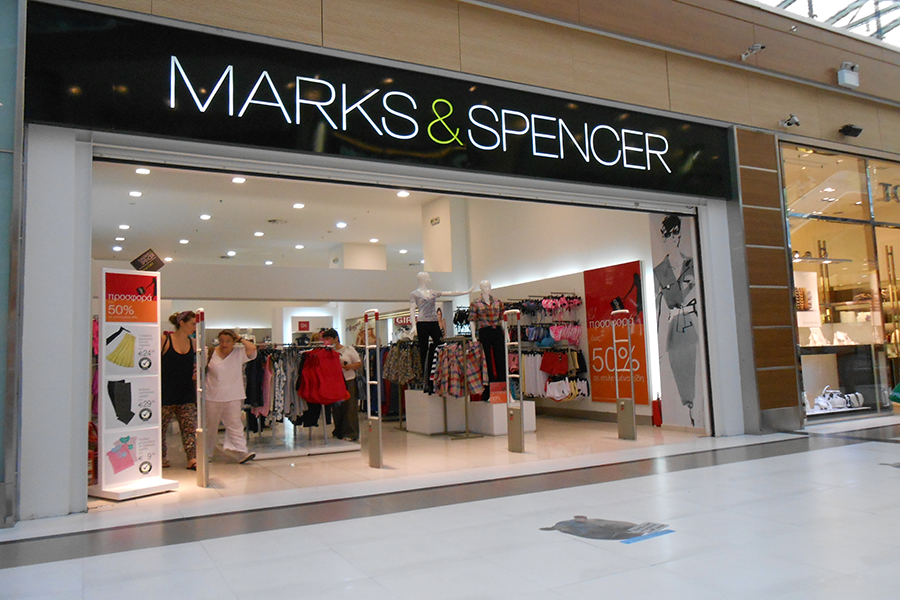
By Professor Isabelle Szmigin, Professor of Marketing
Department of Marketing, University of Birmingham
Marks and Spencer has been in decline for many years. The problem is that it has never really bitten the bullet of change.
As Marks and Spencer announce the closure of 22 of their outlets, and up to a hundred in total by 2022, should we again be asking whether this tolls the bell for the death of the high street? My answer would be, not really.
Marks and Spencer has been in decline for many years. The problem is that it has never really bitten the bullet of change. But the world has changed for good; all around them value stores, such as Primark and H&M, have been taking the cheaper end of their market while fashion brands, such as Jigsaw, Hobbs and many others, moved into their upper end. But they have continued to persist with large areas of floor space and uninspiring styles and colours. They only ever tweaked things at the edges, meanwhile their competitors were stealing a march.
Over ten years ago, my MBA students highlighted Marks and Spencer as a classic example of a ‘stuck in the middle’ problem, based on theories from the famous Harvard professor Michael Porter. Ten years on and it still rings true. Marks and Spencer doesn’t offer the high value for money and distinctive product that you get from a differentiated business, but they also don’t offer the low prices that come from being a cost leader. Closing stores will only help their costs, they need to think much more radically about what kind of business they need to be to win back their customers.
Marks and Spencer should take the opportunity to learn from its competitors, such as Mango and Topshop, so that it can bring its marketing approach up to speed. In terms of marketing, there are a three main issues that Marks and Spencer need to consider:
- Who is their target market? Marks and Spencer has many target markets reflected by their diverse product range. This would be OK if exactly the same product appealed to a wide age range, but generally it doesn’t. Often, it’s better to plump for a clear segment, really focus on it, and hope that you will pick up a few others along the way. Topshop is essentially a brand for young women, usually with less of a disposable income, but you will often see older and better off women buying the occasional item from there. At Marks and Spencer, the fashion in particular seems to be targeted at some mythical middle aged woman who likes her clothes to be comfortable but not too challenging. Their wishy-washy approach to targeting an audience has cost them over time, with many choosing to shop elsewhere.
- They don’t say quality. The fact is that Marks and Spencer doesn’t emanate quality. It does in its food hall, but clothes are indeterminate colours and there are usually racks and racks with little thought to presentation. In fashion, more tends to be less, unless you are in the Primark or H&M bracket where the whole point is to buy lots at a low price. There is something very off-putting about walking into a shop and seeing literally hundreds of trousers in front of you.
- Fashion in the 21st century does not work to four seasons. Most fashion stores now run on anything up to 50 micro seasons. The whole point of this is to make you feel that there is always something new that you could be buying. If you shop on the internet, every week you will receive a ‘what’s new’ email. As a retailer, this means that there is little point in keeping a large stock of anything, but with Marks and Spencer you go in from one week to the next and very little has changed. They are stuck in a 20th century time warp. Of course it takes time to shift this kind of culture, but it is surprising that they haven’t looked at what the likes of Zara and Mango do in terms of changing their stock to get the customer back in the store every week.
So, while closing stores may help their bottom line in the short term, for Marks and Spencer to move on they are going to have to change. It will be important for them to decide if they are a cheap and cheerful, fashionable retailer for a specific target market, or whether they will go for up-market (as well as in design terms too), quality goods presented in a better, more appealing, way. This change will be especially important at a time where consumers have so much more choice on the high street and the internet than they have ever had before.

Wonderful analysis thank you
I agree they are not emanate style nor quality yet they carry a considerable amount of “overhead” which is dragging them and will continue to affect their profitability
But with the advent of e commerce what about if they hire more creative designers and go online ….I am doing a lot of my shopping online ….I dont want yo pay for showroom rent and large overhead costs in my merchandise!
Not necessarily stuck in the middle if one looks at the entire business model of M&S. The company offers food, clothing and household. Their key target is definitely Mrs M&S, who is employed or retired, middle class and can afford to pay a bit more than the average shopper. So, the segment is accurate, the target is working particular on the grocery side of the business and probably “stuck in the middle” or playing a catch-up on the others?.